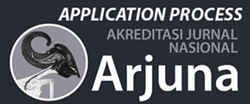Social Media Use and its Impact on Women: A Study of Haryana
DOI:
https://doi.org/10.59653/pancasila.v3i03.1860Keywords:
Social media, women, girls, impact, genderAbstract
Social networking sites provide a platform for sharing knowledge and information on issues of interest with wider audience. It facilitates interpersonal connection, community building, activism and development of diverse perspectives. Despite numerous beneficial aspects of social media platform, it may negatively affect women’s participation and cause psychological harm to women. The impact of social media cannot be understand in isolation with social and cultural contexts and to facilitate an in depth understanding of its impact broader power structure that govern contemporary gender relations needs to be understand. The study aims to find out the pattern of use of social media platforms by rural and urban girls and women, assess the impact of use of social media on their daily life, family relationship, on mental and emotional health and analyse the victimisation of girls through social media, if any. It is survey type research and data was collected with the help of a self structured questionnaire. Random sampling technique was applied to select sample units and 200 women and girls, rural and urban both filled the questionnaire. Findings show that for majority of respondents both rural and urban, whatsapp is the most frequently used social media platform followed by YouTube. It facilitates new learning and helps in maintaining interpersonal relationship, however, many of the respondents show agreement with the negative influences of social media. They believe that it promotes unethical material deteriorating social norms, promoting gender stereotypes affecting gender relationship and creating confusion.
Downloads
References
Casares, D. R., & Binkley, E. E. (2021). An unfiltered look at idealized images: A social media intervention for adolescent girls. Journal of Creativity in Mental Health, 17(3), 313–331. https://doi.org/10.1080/15401383.2021.18925 566.
Chen, J., Ishii, M., Bater, K. L., Darrach, H., Liao, D., Huynh, P. P., Reh, I. P., Nellis, J. C., Kumar, A. R., & Ishii, L. E. (2019). Association between the use of social media and photograph editing applications, self-esteem, and cosmetic surgery acceptance. JAMA Facial Plastic Surgery, 21(5), 361–367. https://doi.org/10.1001/jamafacial.2019.0328.
Emamirizi, C. (2016). The effect of use of social networks on the girl students’ academic achievement. Education Strategy Med Science, 9 (3), 206-213.
Ghulam, S., Yousef, M., Yousef, H., Ghulam, S., & Gilani, S. M. F. S. (2014). The impact of social media on youth: A case study of Bahawalpur city. Asian Journal of Social Sciences & Humanities, 3(4), 132-151.
Govender, Y. R., & Krishna, K. (2013). The relationship among certain youths' demographic variables and their social media browsing behaviour. African Journal of Business Management, 7(25), 2495-2499.
Halder, D., & Jaishankar, K. (2011). Cyber crime and the victimization of women. Laws, rights, and regulations. Hershey, USA: IGI Global.
Kira, E. R., Kenneth, A. F., & Kayla, N. T. (2019). Associations between time spent using social media and internalizing and externalizing problems among US youth. JAMA Psychiatry, 76(12), 1266-1273. doi:10.1001/jamapsychiatry.2019.2325.
Kleemans, M., Daalmans, S., Carbaat, I., & Anschütz, D. (2016). Picture perfect: The direct effect of manipulated Instagram photos on body image in adolescent girls. Media Psychology, 21(1), 93–110. https://doi.org/10.1080/15213269.2016.1257392.
Lenhart, A. T. (2015). Social media and technology overview. [Ebook]. https://www. Pewin ternet.org/2015/04/09/teens-social-media-technology-2015/.
Lovelesh, K., & Yadav, R. (2024). Life of women in the social media era: A review. European Economic Letters (EEL), 14(3), 620–625. https://doi.org/10.52783/eel.v14i3.1809.
Mango, A.M. et al. (2008). Self presentation and gender on my space. Journal of Applied Developmental Psychology, 446-458, 10.1016/j.aappdev.2008.07.001.
Megan, A. P., Jeffrey, P. Y., Megan, M., & Moreno, A. (2011). Perceptions and use of social networking sites in the United States and Ecuador: A mixed method approach. College Student Journal, 478-484.
Meier, E.P., & Gray, J. (2014). Face book photo activity associated with body image disturbance in adolescent girls. Cyber Psychology Behaviour Society Network, 17, 199–206.
Park, K. et al. (2023). The impact of the use of social media on women and girls. European Parliament’s Policy Department for Citizens’ Rights and Constitutional Affairs at and Directorate-General for Internal Policies PE 743.341. https://www.europarl.europa.eu/RegData/etudes/STUD/2023/743341/IPOL_STU(2023)743341_EN.pdf
Pavlik, J., & MacIntoch, S. (2015). Converging media, 4th edition. New York, NY: Oxford University Press, 189.
Raffoul, A. (2023, September 14). Exploring the effect of social media on teen girls’ mental health. Harvard T.H Chan School of Public Health. https://hsph.Harvard.edu
Shekhawat S., & Bhatt, B. (2021). Analysing impact of social media on women: A study in Vadodara city. International Journal of Interdisciplinary Research and Innovations, 9(1), 53-59, ISSN 2348-1226: www.researchpublish.com
Statista. (2019). Time spent on social media as a source of happiness for Indians. https://www.statista.com/statistics/1066519/india-time-spent-on-social-media-as-source-of-happiness/.
Vogel, E. A., & Watnick, S. G. (2025). Teens and social media: Key findings. Pew Research Centre Surveys. Pew Research Centre. https://www.pewresearch.org
Wilksch, S. M., O'Shea, A., Ho, P., Byrne, S., & Wade, T. D. (2020). The relationship between social media use and disordered eating in young adolescents. International Journal of Eating Disorders, 53, 96–106. https://doi.org/10.1002/eat.23198.
Downloads
Published
How to Cite
Issue
Section
Categories
License
Copyright (c) 2025 Vandana Dave

This work is licensed under a Creative Commons Attribution-ShareAlike 4.0 International License.
Authors who publish with this journal agree to the following terms:
- Authors retain copyright and grant the journal right of first publication with the work simultaneously licensed under a Creative Commons Attribution-ShareAlike that allows others to share the work with an acknowledgement of the work's authorship and initial publication in this journal.
- Authors are able to enter into separate, additional contractual arrangements for the non-exclusive distribution of the journal's published version of the work (e.g., post it to an institutional repository or publish it in a book), with an acknowledgement of its initial publication in this journal.
- Authors are permitted and encouraged to post their work online (e.g., in institutional repositories or on their website) prior to and during the submission process, as it can lead to productive exchanges, as well as earlier and greater citation of published work (See The Effect of Open Access).
























